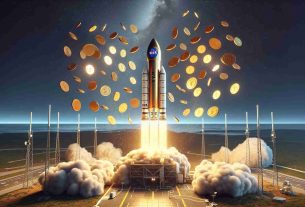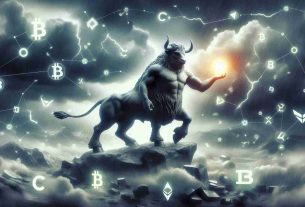Tokenization’s integration into the traditional financial sphere is gaining traction, as evidenced by a substantial increase in the value of tokenized real-world assets (RWAs). These assets have achieved an impressive total value locked (TVL) of $8 billion, displaying a strong preference among investors for secured, profitable investments.
Tokenized RWAs represent a significant stride towards fusing the conventional finance domain with the rapidly evolving cryptocurrency landscape. By creating digital tokens that represent ownership of physical assets, the lines between the two realms are blurring.
Industry insiders anticipate that as the traditional finance sector becomes more invested, the growth of tokenized RWAs will only accelerate. Remarkably, these experts predict that RWAs could potentially tower over the current value of cryptocurrencies. By adopting the securitization practices familiar within traditional finance, the crypto world sees a burgeoning influx of these digital representations of physical assets.
The significance of RHAs is further underlined when considering the tokenization potential against the entirety of financial markets and instruments globally—estimated to be a colossal $1.7 quadrillion. This vast scope extends to potential new assets such as royalties and art.
Tokenization is revolutionizing ownership, trading, and management of assets within traditional finance by bringing unmatched liquidity, transparency, and efficiency. One tangible example of this transformation is witnessed in the application of tokenization by UK’s Arbdn to their money market fund worth over $20 billion. Through tokenization on blockchain platforms like Hedera, companies like Arbdn are simplifying and streamlining processes such as reinvestment and liquidity management, hinting at a new era of financial operations.
Tokenization of real-world assets (RWAs) refers to the process of converting rights to an asset into a digital token on a blockchain. This innovative approach to asset management comes with various advantages and challenges, and has sparked important questions within the traditional finance industry.
Key Questions:
1. What are Tokenized Real-World Assets? Tokenized RWAs are digital representations of ownership in a real-world asset, such as real estate, art, or commodities, using blockchain technology.
2. How do tokenized assets differ from cryptocurrencies? Unlike cryptocurrencies, which are inherently digital and often serve as a medium of exchange or store of value, tokenized assets are directly linked to the value of tangible assets in the real world.
3. What are the regulatory implications of tokenization? The tokenization of real-world assets must navigate a complex framework of regulations that govern traditional securities, adding a layer of complexity to their issuance and trade.
Key Challenges and Controversies:
– Regulatory Compliance: Adhering to securities laws and regulations can be a significant hurdle for tokenization, as the legal classification of tokens remains under debate in many jurisdictions.
– Market Adoption: Despite the potential benefits, the adoption of tokenization by traditional financial institutions and investors might be slowed by skepticism and the conservative nature of the sector.
– Technological Risks: Relying on blockchain platforms introduces risks such as cyber attacks, smart contract vulnerabilities, and the evolving landscape of blockchain technology itself.
Advantages:
– Liquidity: Tokenizing illiquid assets can make them more accessible to a broader range of investors, potentially increasing market liquidity.
– Democratization of Investing: Tokenization allows for fractional ownership, which can lower the entry barriers to investment for small investors.
– Transparency and Efficiency: Blockchain technology offers a transparent and efficient way to track asset ownership and transaction history.
Disadvantages:
– Complexity: The intricacies of blockchain and tokenization can be difficult for investors and regulators to fully understand and navigate.
– Interoperability: The lack of standardization across different blockchain platforms can create challenges in terms of interoperability and the movement of tokenized assets.
To learn more about companies that are pioneering in blockchain and the tokenization of assets, you might visit their main domains such as Hedera or explore the official portals of traditional finance institutions that are venturing into tokenization.
It’s important to note that these facts and insights do not exist within the article provided but rather serve as additional relevant information about the rise of tokenized real-world assets in traditional finance. The assessment of these points, especially the questions, advantages, disadvantages, and challenges, provides a broader understanding of what the integration of tokenization into traditional finance entails.



